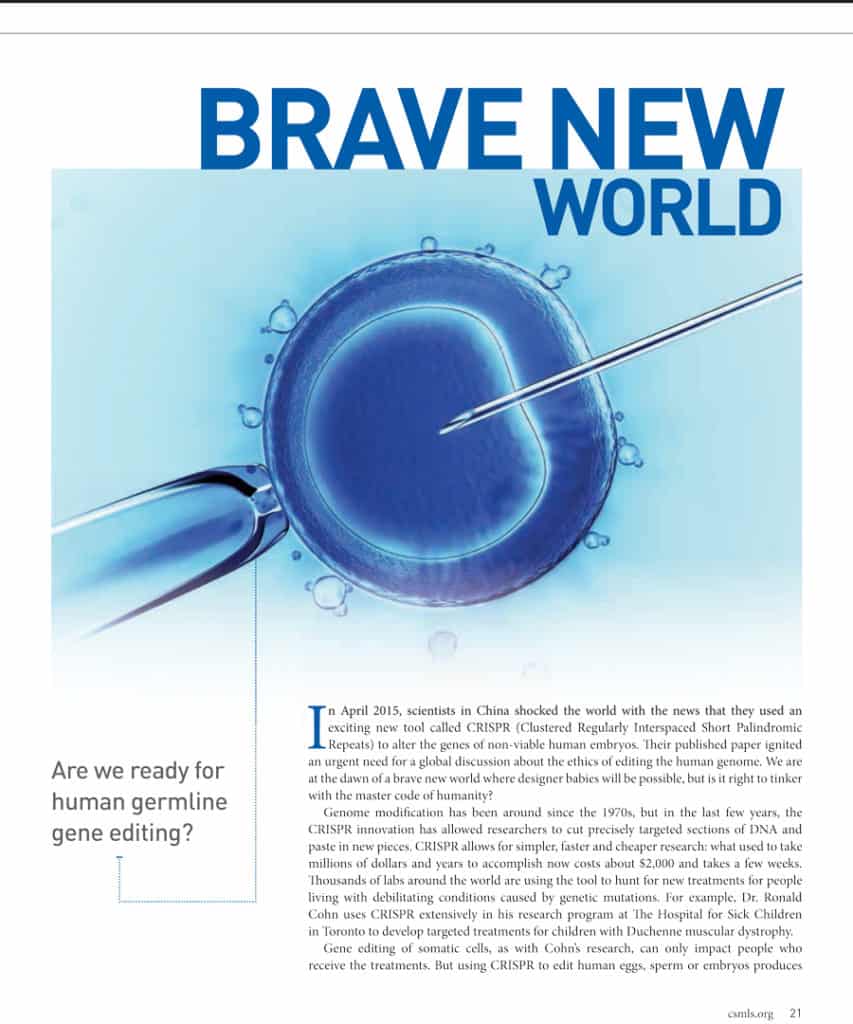Right now, scientists can edit the genes of human embryos. Using an exciting technology called CRISPR (clustered randomly interspersed short palindromic repeats), they can make precise cuts in targeted sections of DNA and paste in new code.
But should they? Editing the genes of human embryos could prevent debilitating disease, but those changes will alter the germline — they will be passed on to subsequent generations. Where do we draw the line between prevention and enhancement? And who decides?
Human embryo gene editing: A global ethical conversation
In December 2015, leading scientists and bioethicists from around the world convened at the International Summit on Human Gene Editing in Washington, D.C., to discuss these ethical questions and outline a framework for how the world should collectively proceed. I watched the Summit discussions live, online and was fascinated by the whole topic. Last January, when my editor at the Canadian Journal of Medical Laboratory Science suggested a story on the ethics of fertility medicine, I knew exactly what I wanted to write about. I’m thrilled she agreed.
Canada’s position
It was exciting to explore the ethical questions of human embryo gene editing from a Canadian perspective. I enjoyed interviewing Canada’s Research Chair in Bioethics and Philosophy, Françoise Baylis, Ph.D., a professor at Dalhousie University in Halifax, Nova Scotia, and the only Canadian on the Summit’s organizing committee. It was also terrific to include Dr. Arthur Leader’s views. He is the founder of the Ottawa Fertility Centre and professor of obstetrics, gynecology and reproductive medicine at the University of Ottawa.
Regulatory frameworks vary between countries, so the road ahead will be very bumpy as the science advances. In Canada right now, editing human embryos is prohibited. But as global citizens, we will all be affected as scientists in other countries proceed with research.
Are we at the dawn of a brave new world? Time will tell as the global conversation tries to keep pace with the science.
Click on the image below to read the story:
Further reading:



